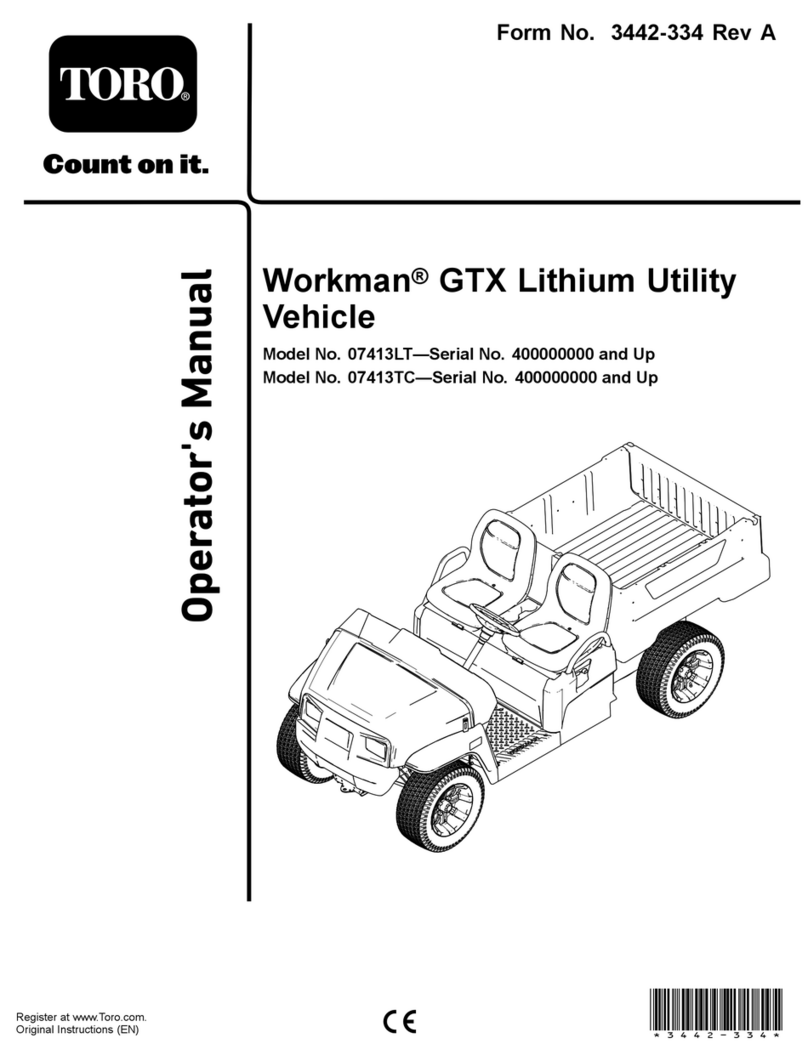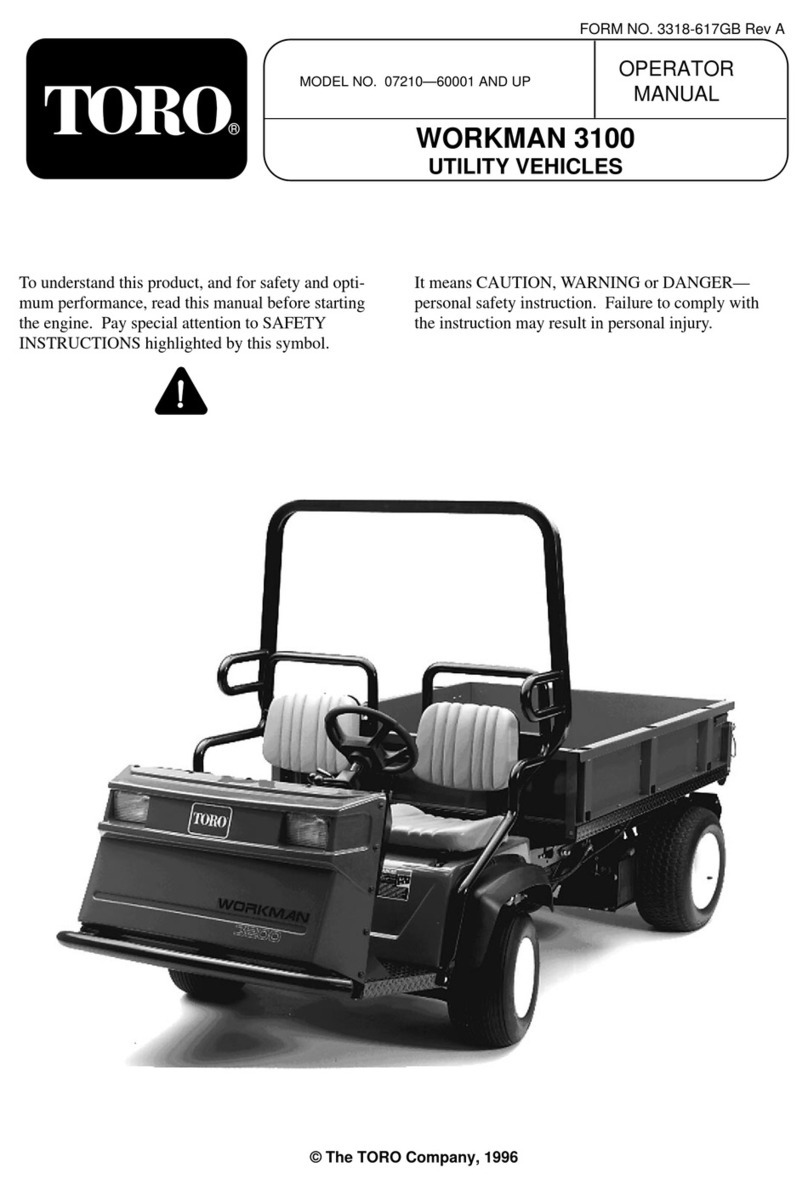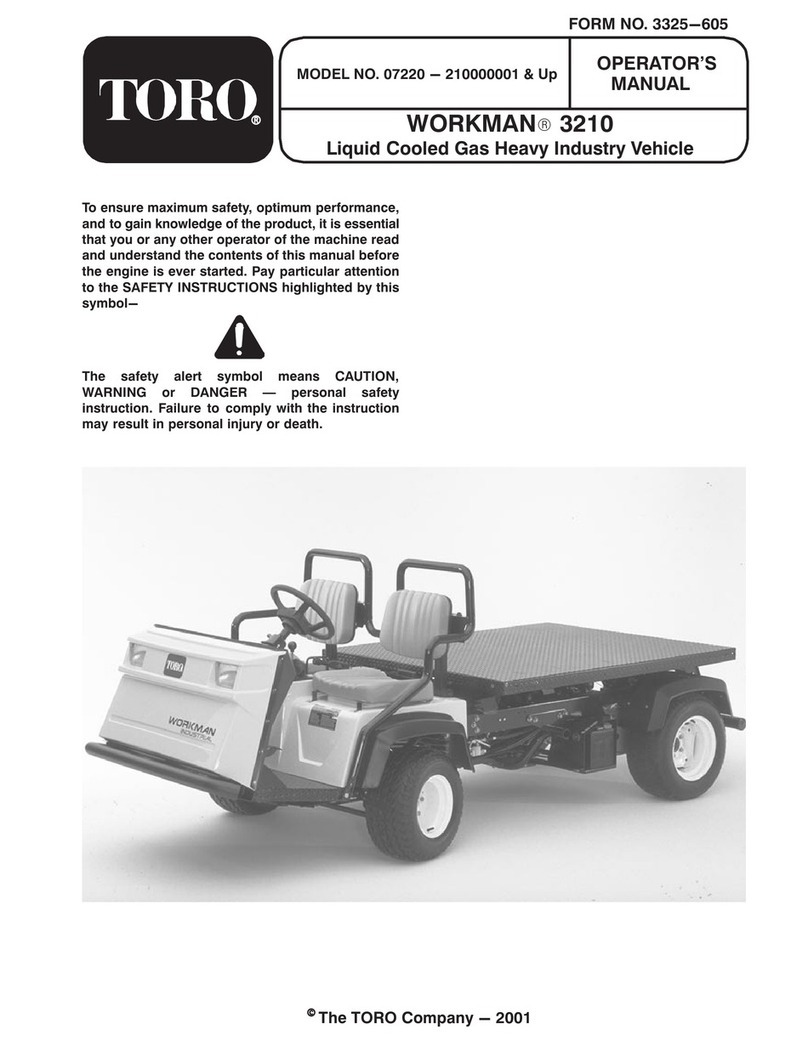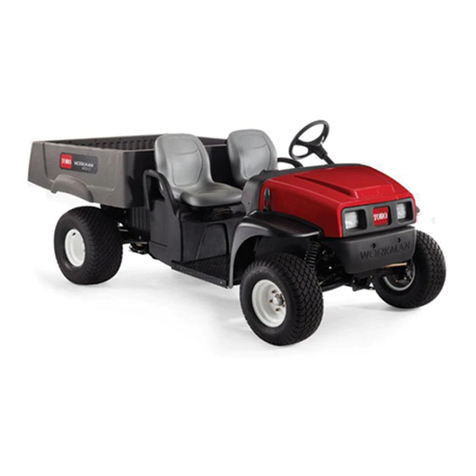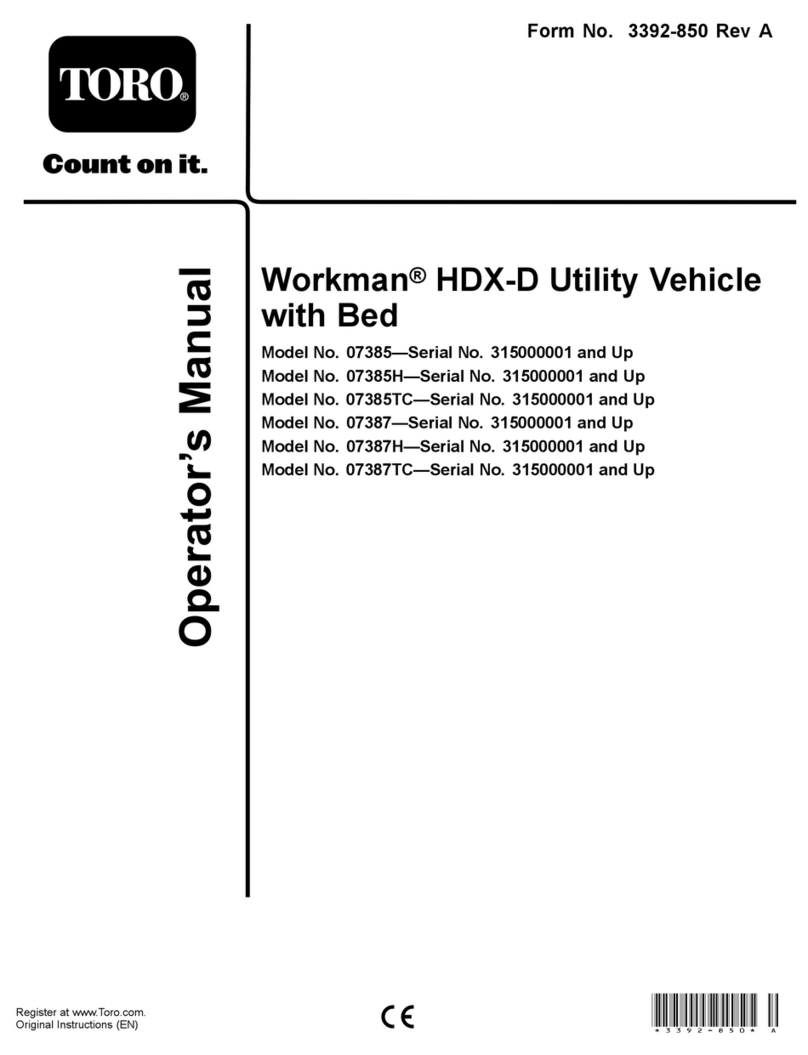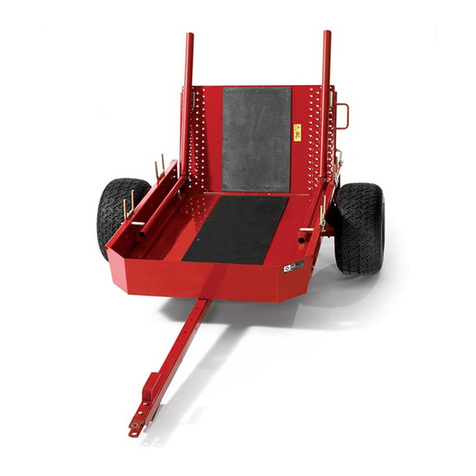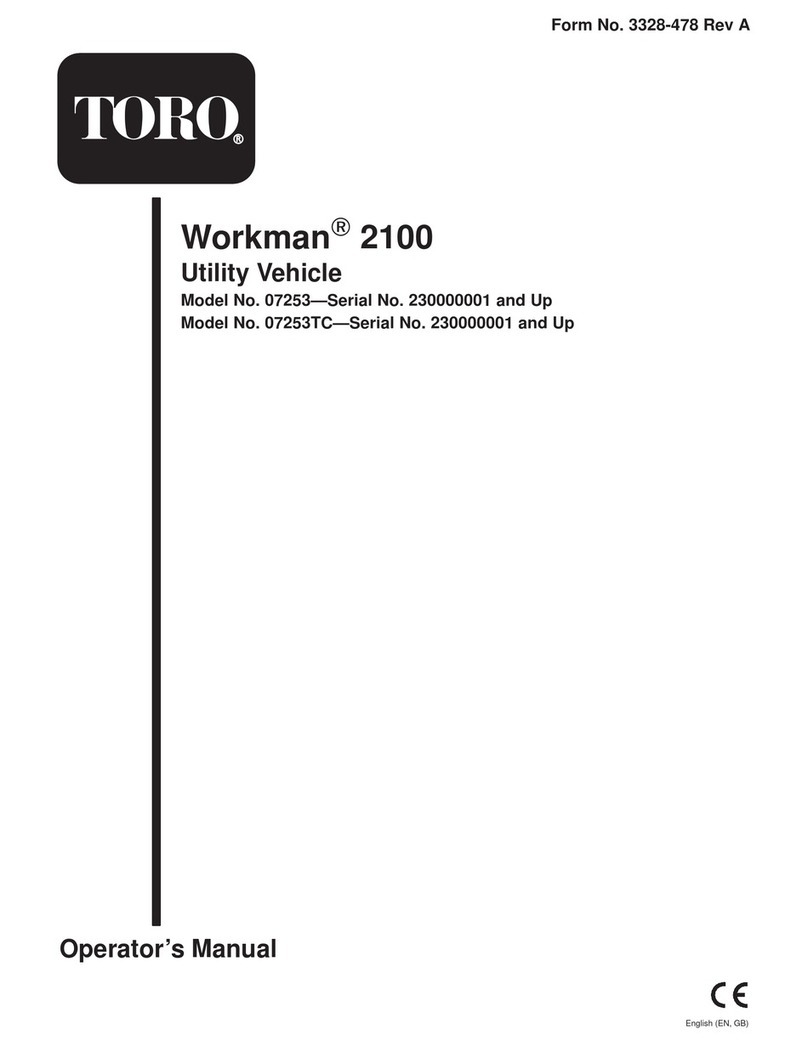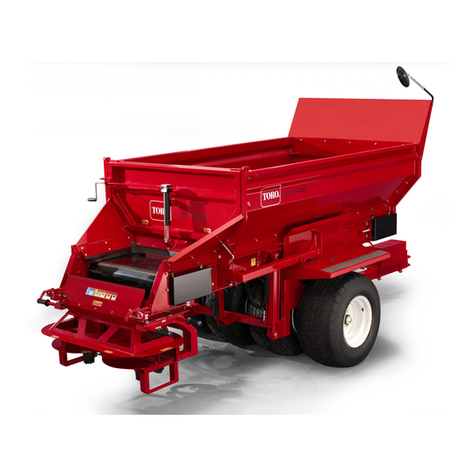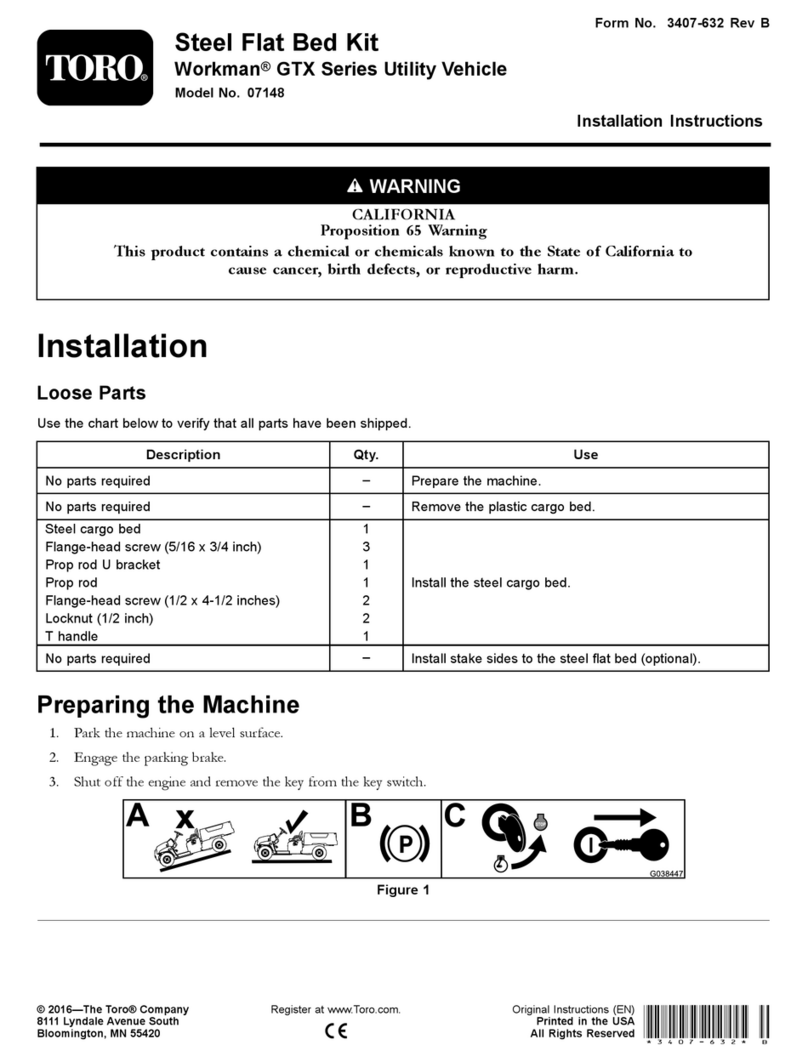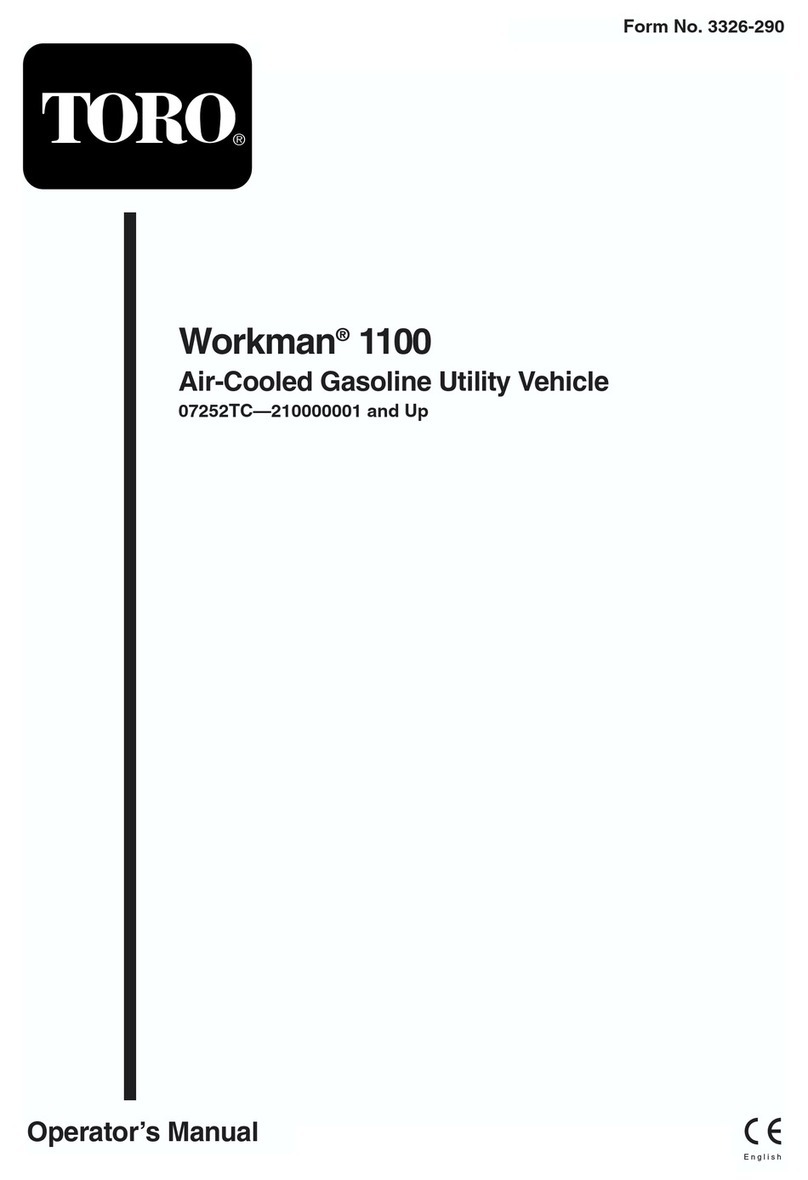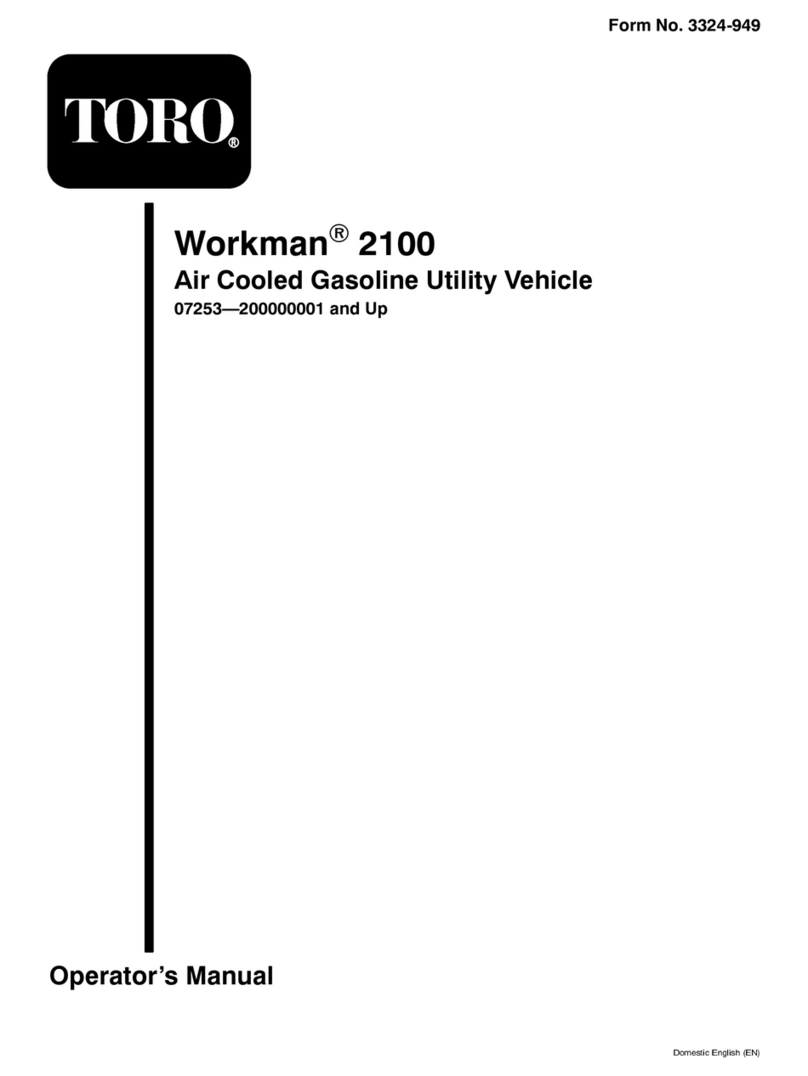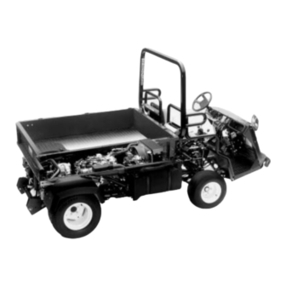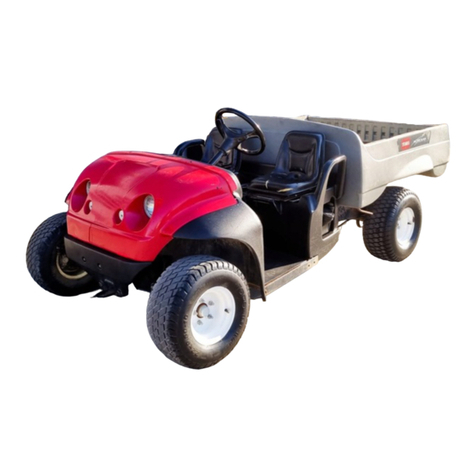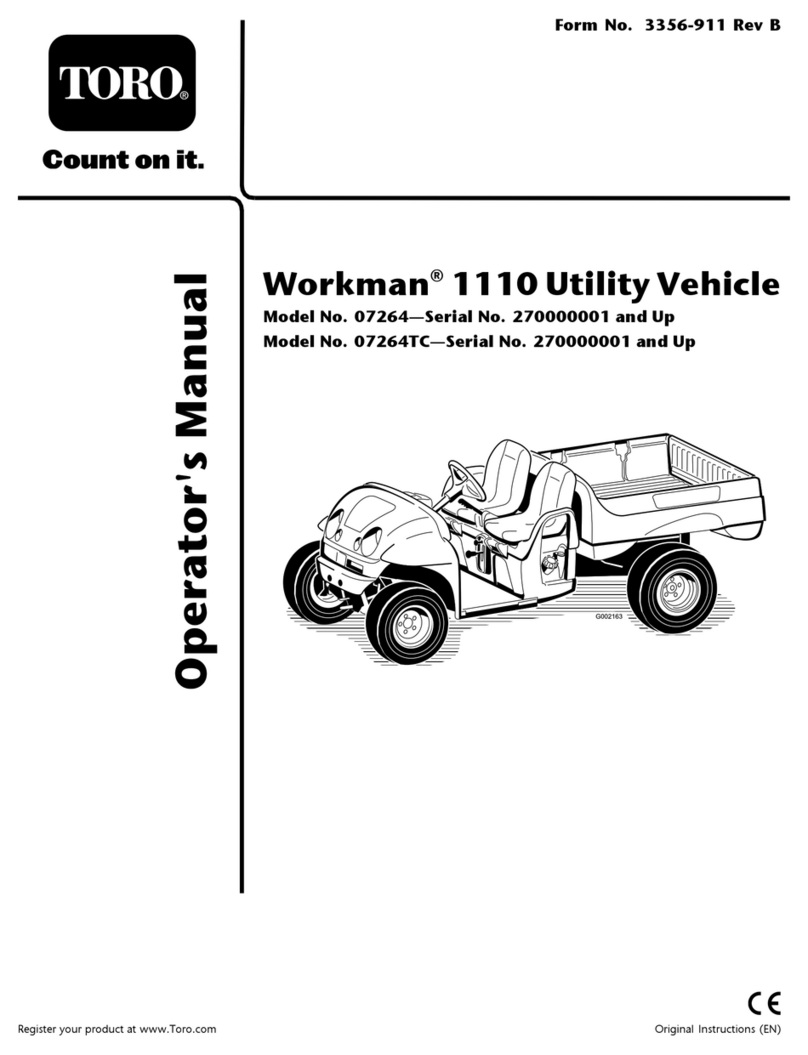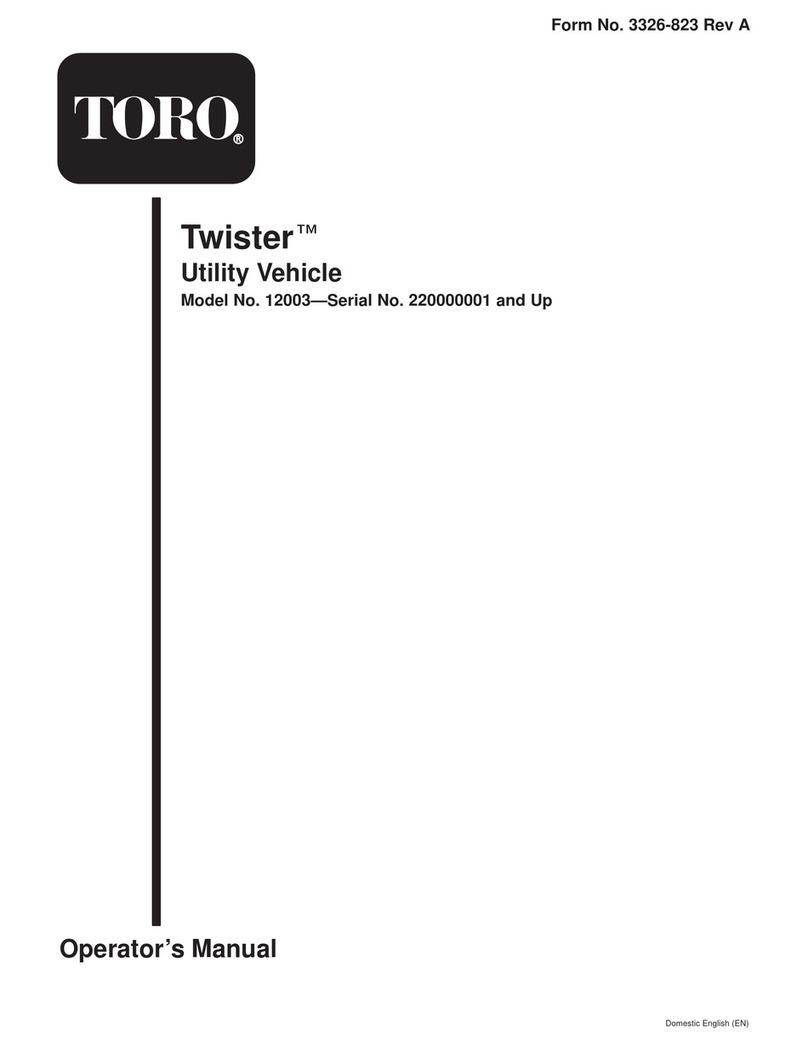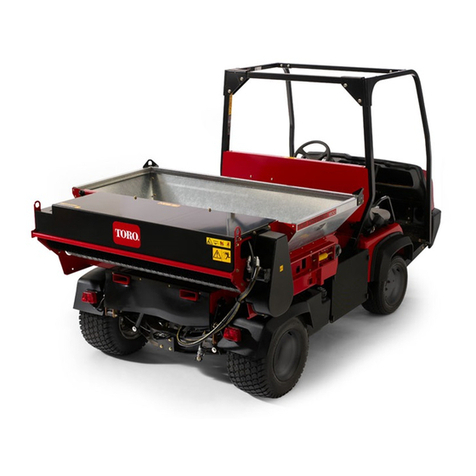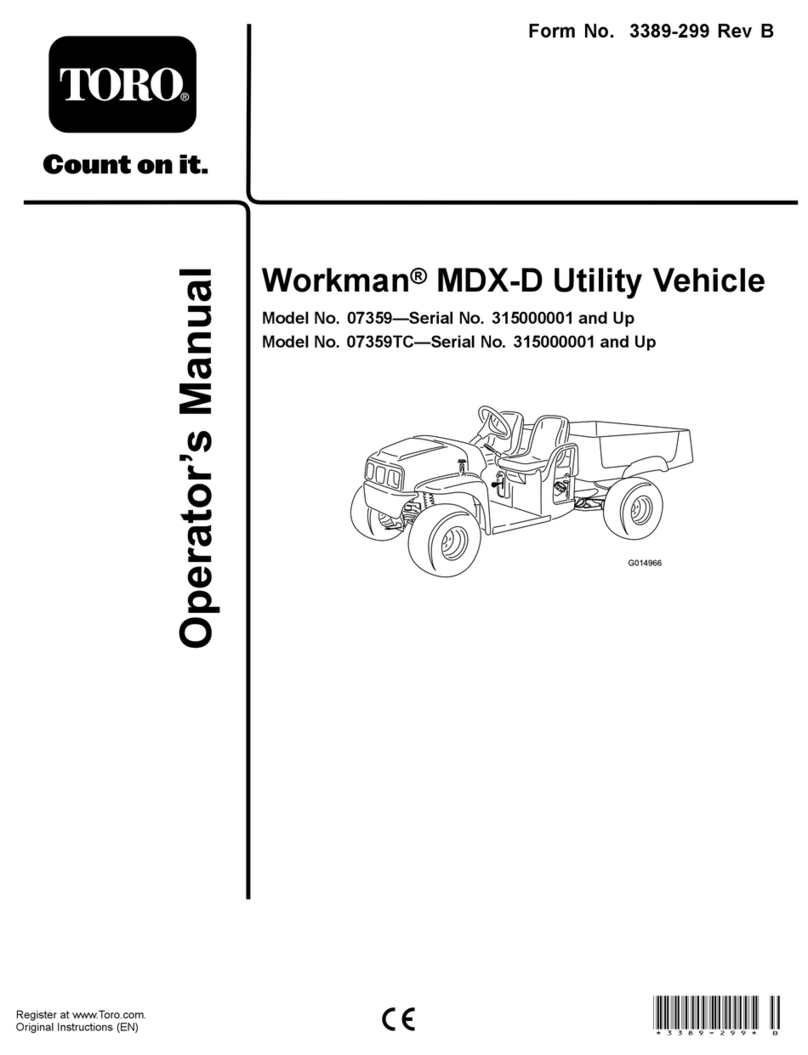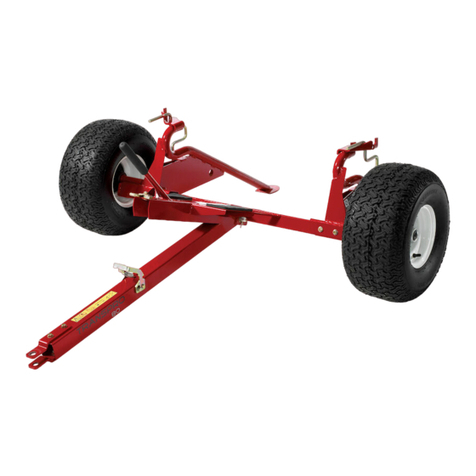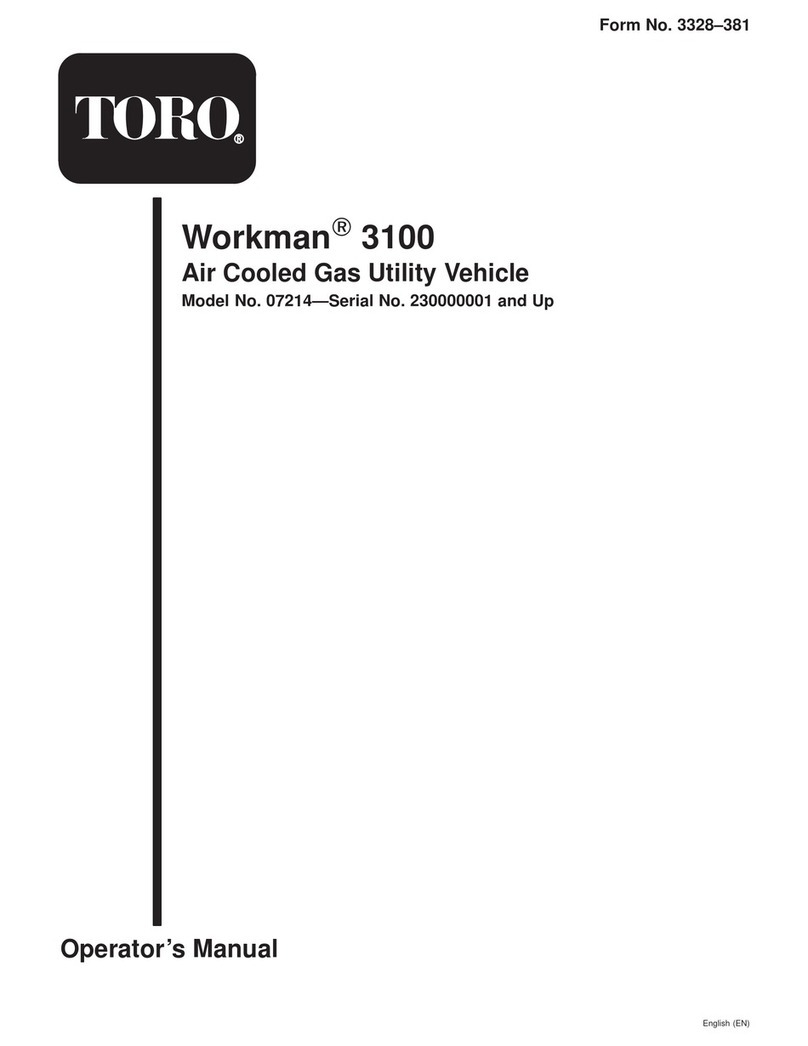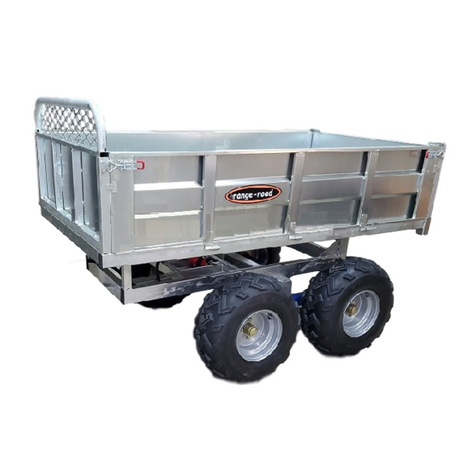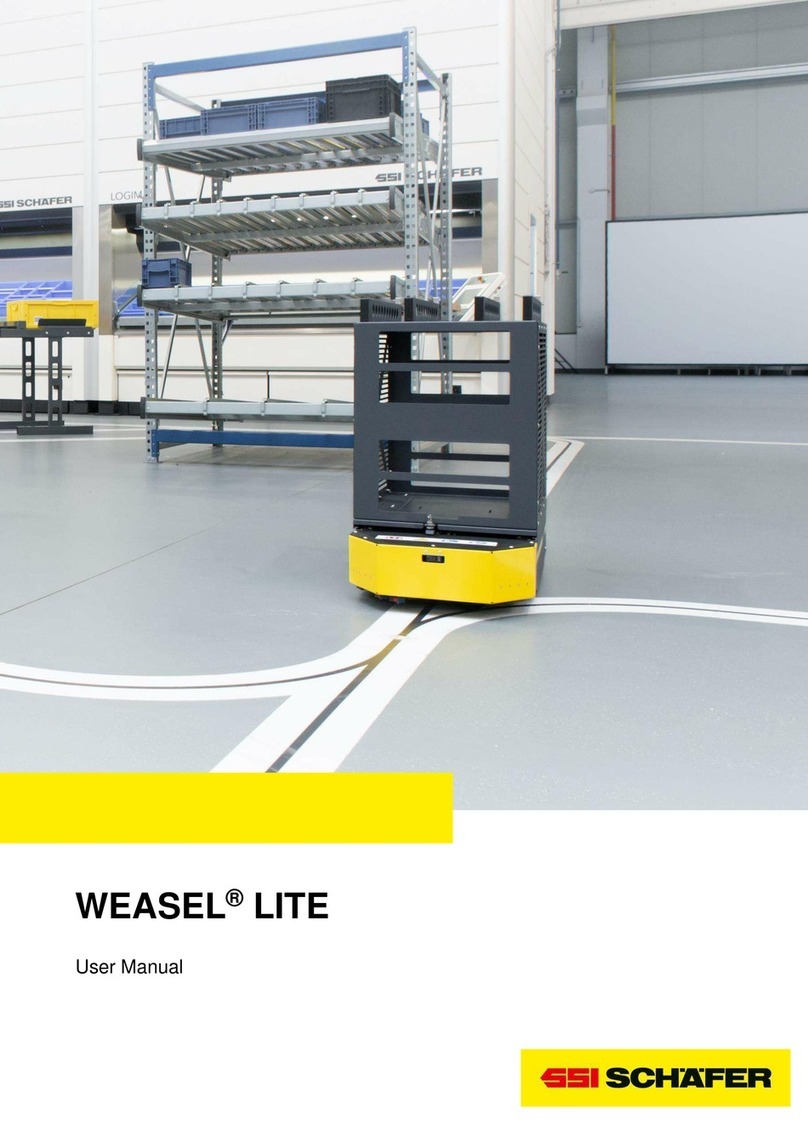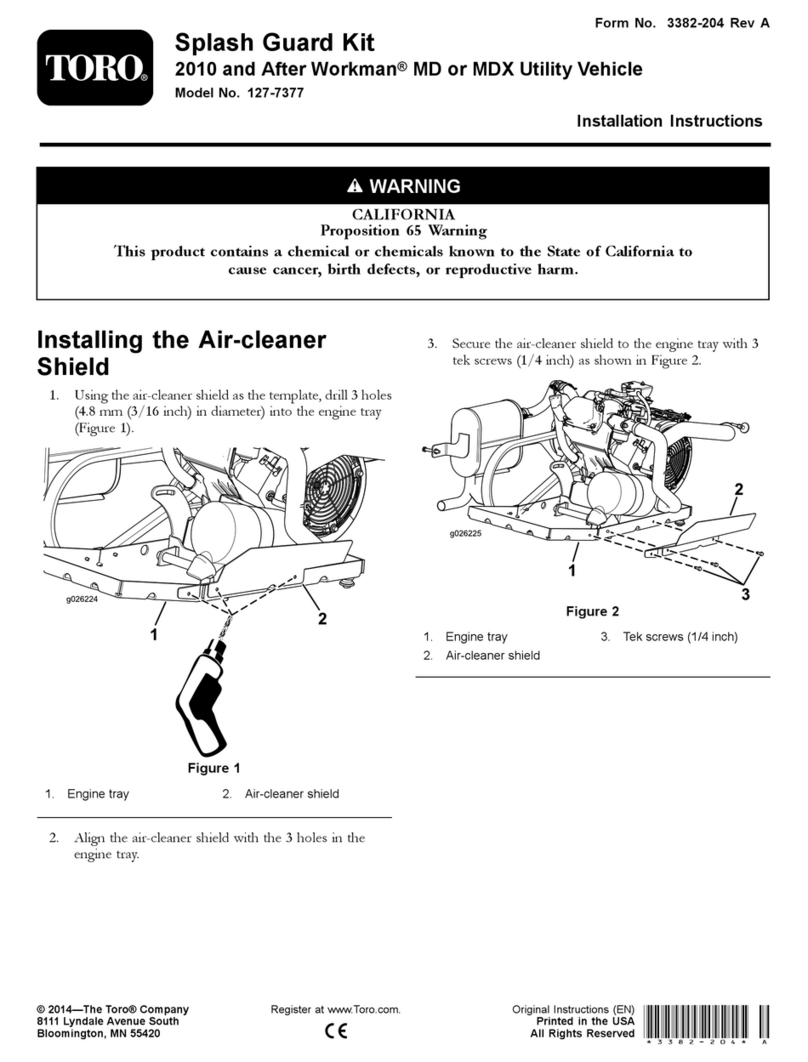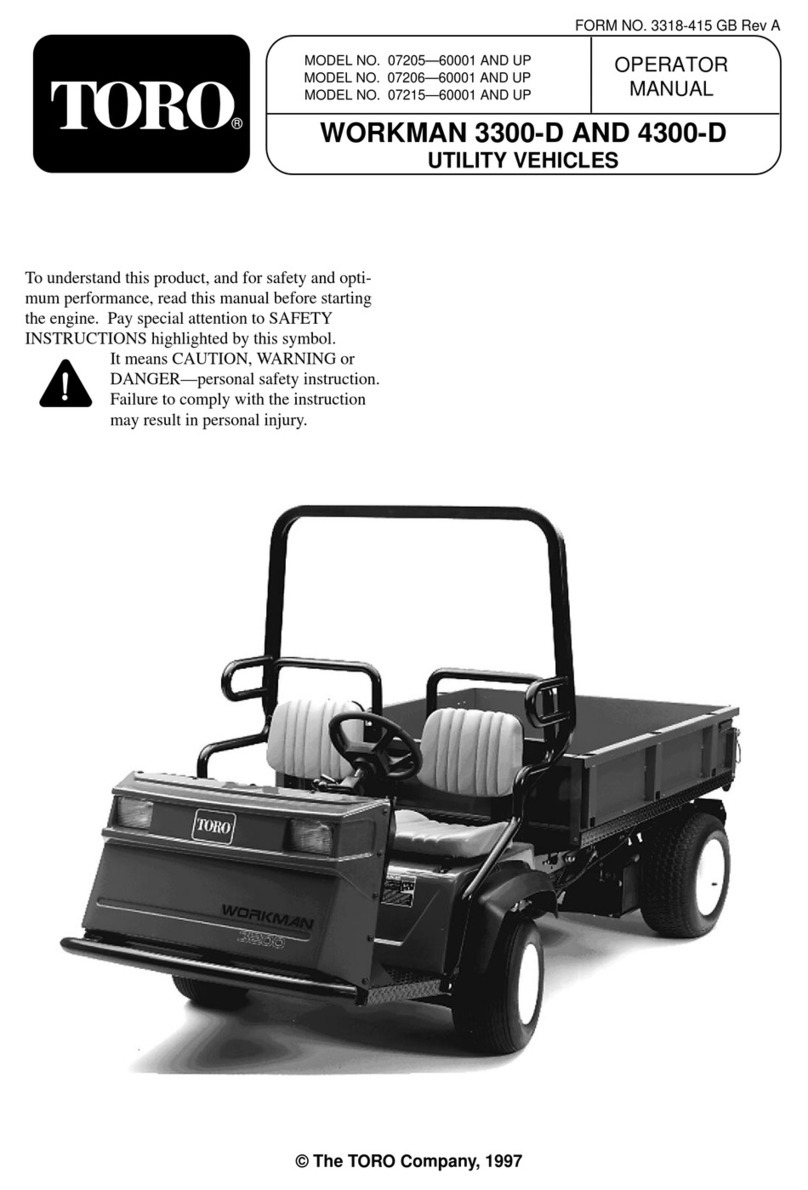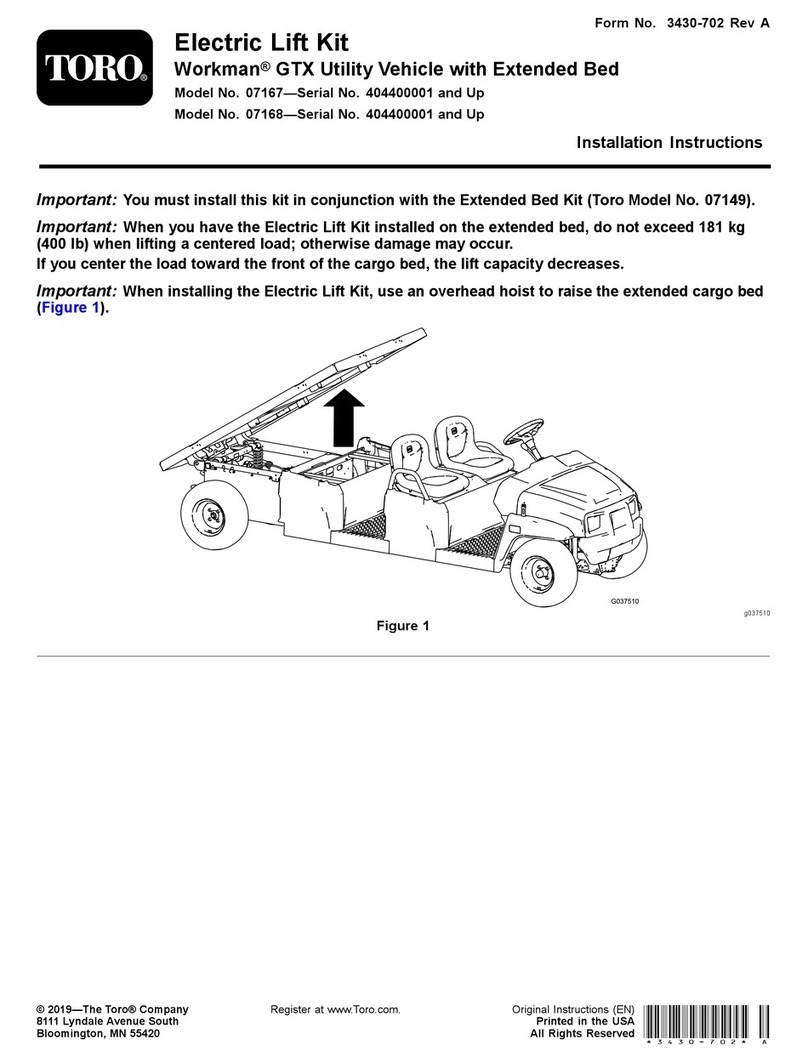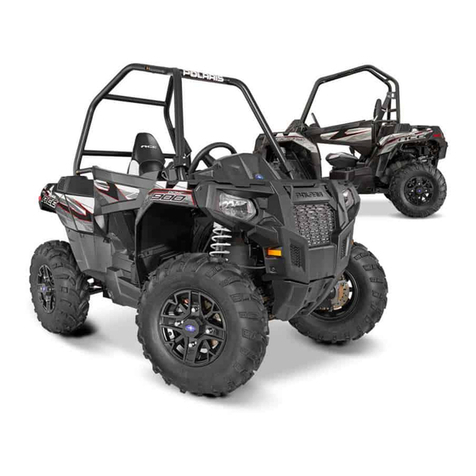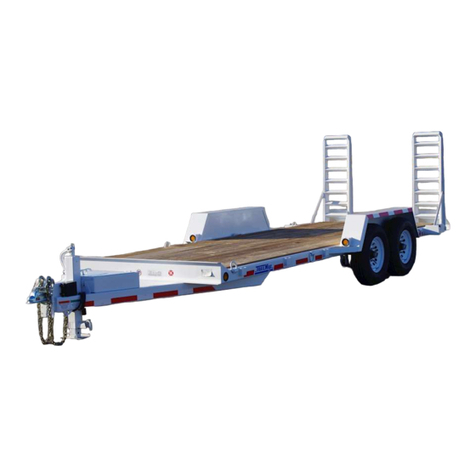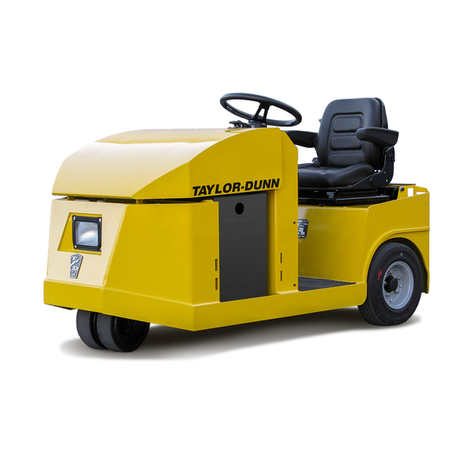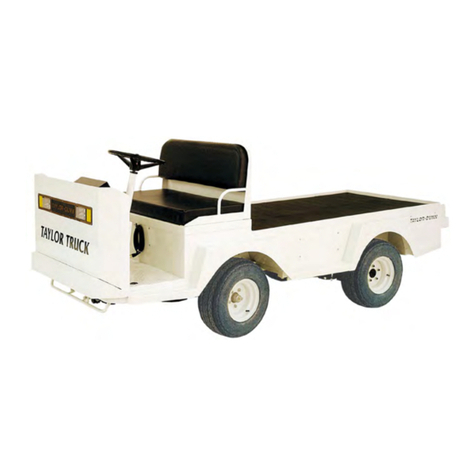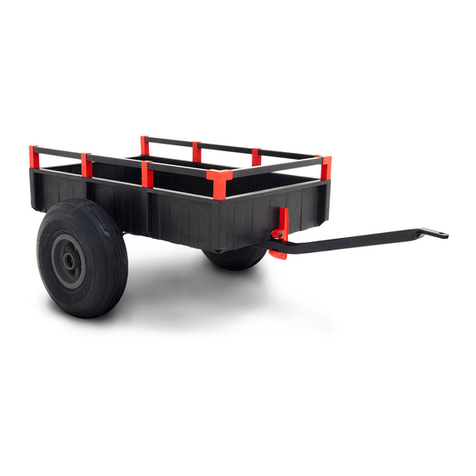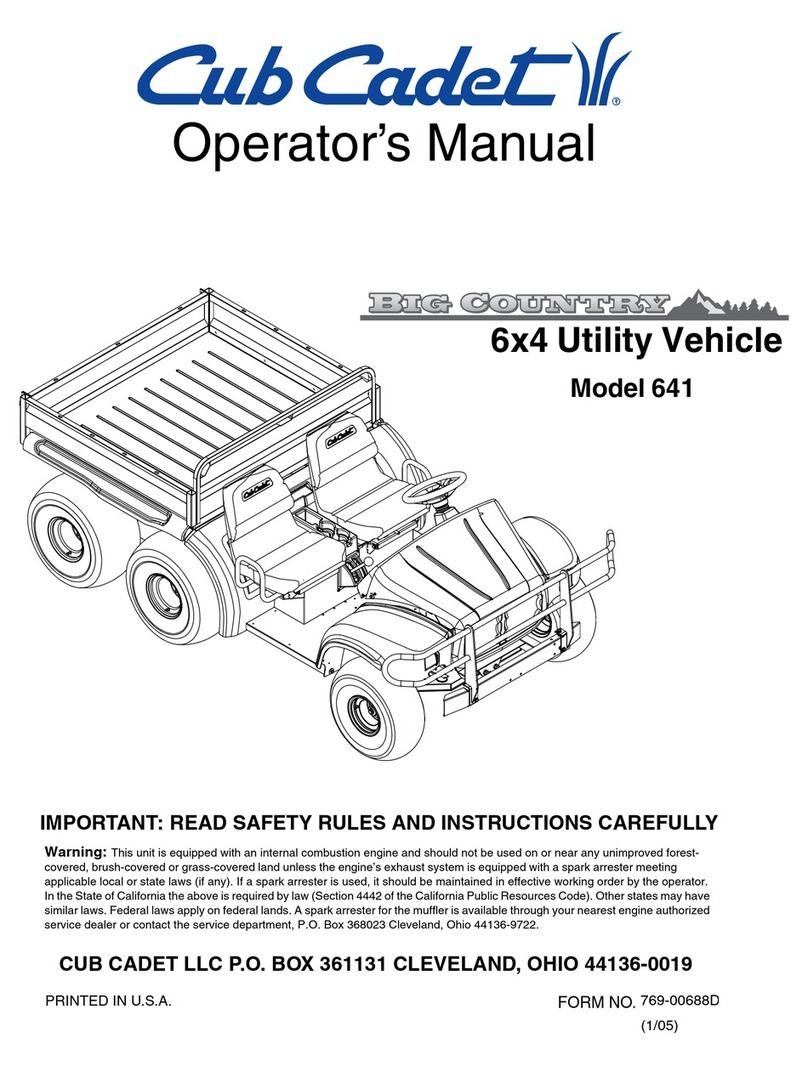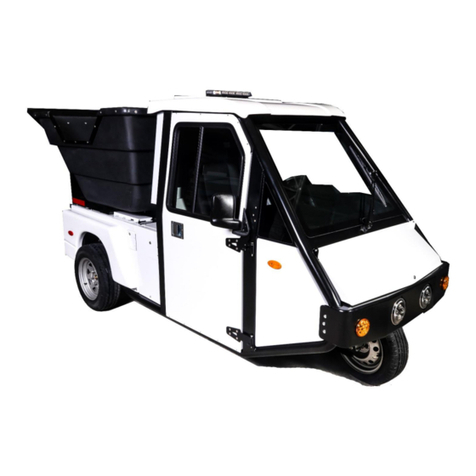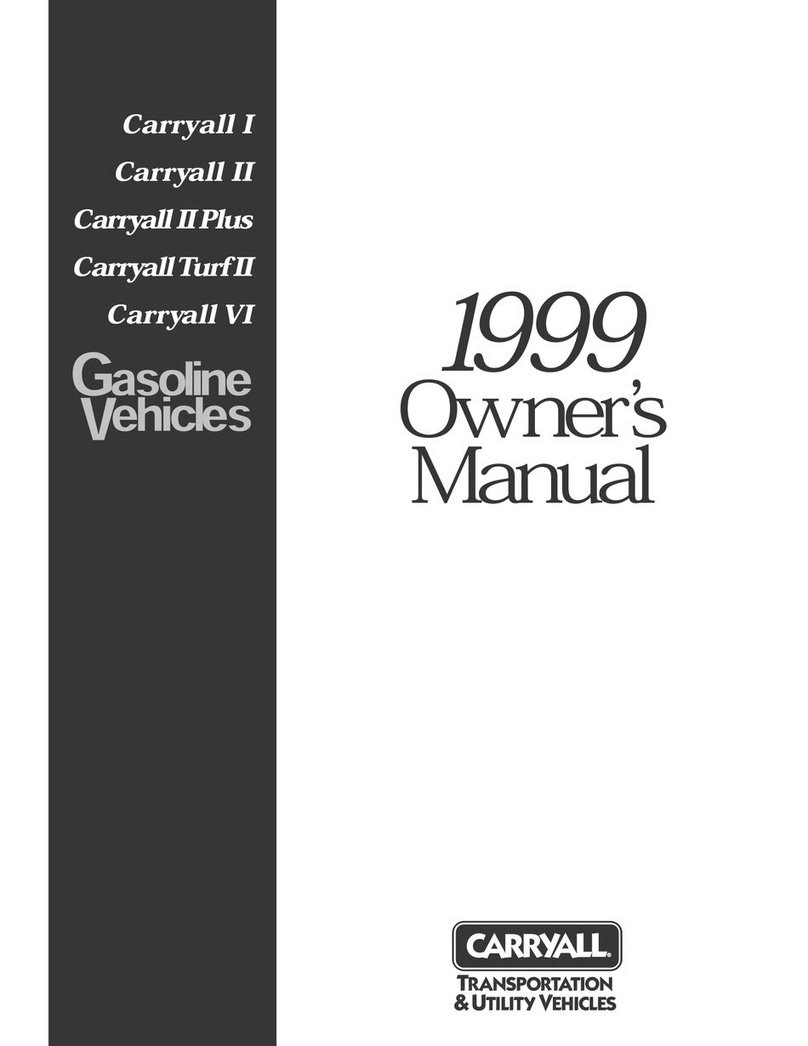
T he operator should k ee p both hands on the
steering wheel whenev er possible , and the
passeng er should use the hand holds pro vided.
K ee p y our ar ms and legs within the v ehicle
body at all times .
•Dri v e slo w er and tur n less shar ply when y ou
are car r ying a passeng er . R emember y our
passeng er ma y not be expecting y ou to brak e
or tur n and ma y not be ready .
•Alw a ys w atc h out for and a v oid lo w o v erhangs
suc h as tree limbs , door jambs , and o v er -head
w alkw a ys . Mak e sure there is enough room
o v er head to easily clear the v ehicle and y our
head.
•F ailure to operate the v ehicle safely ma y result
in an accident, tip o v er of the v ehicle , and
serious injur y or death. Dri v e carefully . T o
prev ent tipping or loss of control:
– Use extreme caution, reduce speed, and
maintain a safe distance around sand traps ,
ditc hes , creeks , ramps , unfamiliar areas ,
or any areas that ha v e abr upt c hang es in
g round conditions or elev ation.
– W atc h for holes or other hidden hazards .
– Use extra caution when operating the
v ehicle on w et surfaces , in adv erse w eather
conditions , at higher speeds , or with a
full load. Stopping time and distance will
increase with a full load.
– A v oid sudden stops and star ts . Do not
g o from rev erse to forw ard or forw ard to
rev erse without first coming to a complete
stop .
– Slo w do wn before tur ning . Do not attempt
shar p tur ns or abr upt maneuv ers or other
unsafe dri ving actions that ma y cause a loss
of v ehicle control.
– W hen dumping, do not let any one stand
behind the v ehicle and do not dump the
load on any one’ s feet. R elease the tailg ate
latc hes from the side of the bo x, not from
behind.
– Only operate the v ehicle when the carg o
bo x is do wn and latc hed.
– Before bac king up , look to the rear and
ensure that no one is behind y ou. Bac k up
slo wly .
– W atc h out for traffic when y ou are near or
crossing roads . Alw a ys yield the right of
w a y to pedestrians and other v ehicles . T his
v ehicle is not designed for use on streets or
highw a ys . Alw a ys signal y our tur ns or stop
early enough so that other people kno w
what y ou plan to do . Obey all traffic r ules
and regulations .
– T he electrical system of the v ehicle
can produce sparks capable of igniting
explosi v e materials . Nev er operate the
v ehicle in or near an area where there is
dust or fumes in the air whic h are explosi v e .
– If y ou are ev er unsure about safe operation,
stop w or k and ask y our super visor .
•If the v ehicle ev er vibrates abnor mally , stop
immediately , w ait for all motion to stop , and
inspect the v ehicle for damag e . R e pair all
damag e before commencing operation.
•Before g etting off of the seat:
1. Stop the mo v ement of the v ehicle .
2. Set the parking brak e .
3. T ur n the k ey to Off .
4. R emo v e the k ey .
Note: If the v ehicle is on an incline , bloc k
the wheels after g etting off of the v ehicle .
Braking
•Slo w do wn before y ou approac h an obstacle .
T his gi v es y ou extra time to stop or tur n a w a y .
Hitting an obstacle can damag e the v ehicle and
its contents . More impor tant, it can injure y ou
and y our passeng er .
•Gross V ehicle W eight (GVW) has a major
impact on y our ability to stop and/or tur n.
Hea vy loads and attac hments mak e a v ehicle
harder to stop or tur n. T he hea vier the load,
the long er it tak es to stop .
•Decrease the v ehicle speed if the carg o bo x has
been remo v ed and there is no attac hment on
the v ehicle . T he braking c haracteristics c hang e
and fast stops ma y cause the rear wheels to loc k
up , whic h ma y affect the control of the v ehicle .
•T urf and pa v ement are m uc h more slipper y
when they are w et. It can tak e 2 to 4 times
as long to stop on w et surfaces as on dr y
surfaces . If y ou dri v e through standing w ater
dee p enough to g et the brak es w et, they will
not w ork w ell until they are dr y . After dri ving
through w ater , y ou should test the brak es to
5
